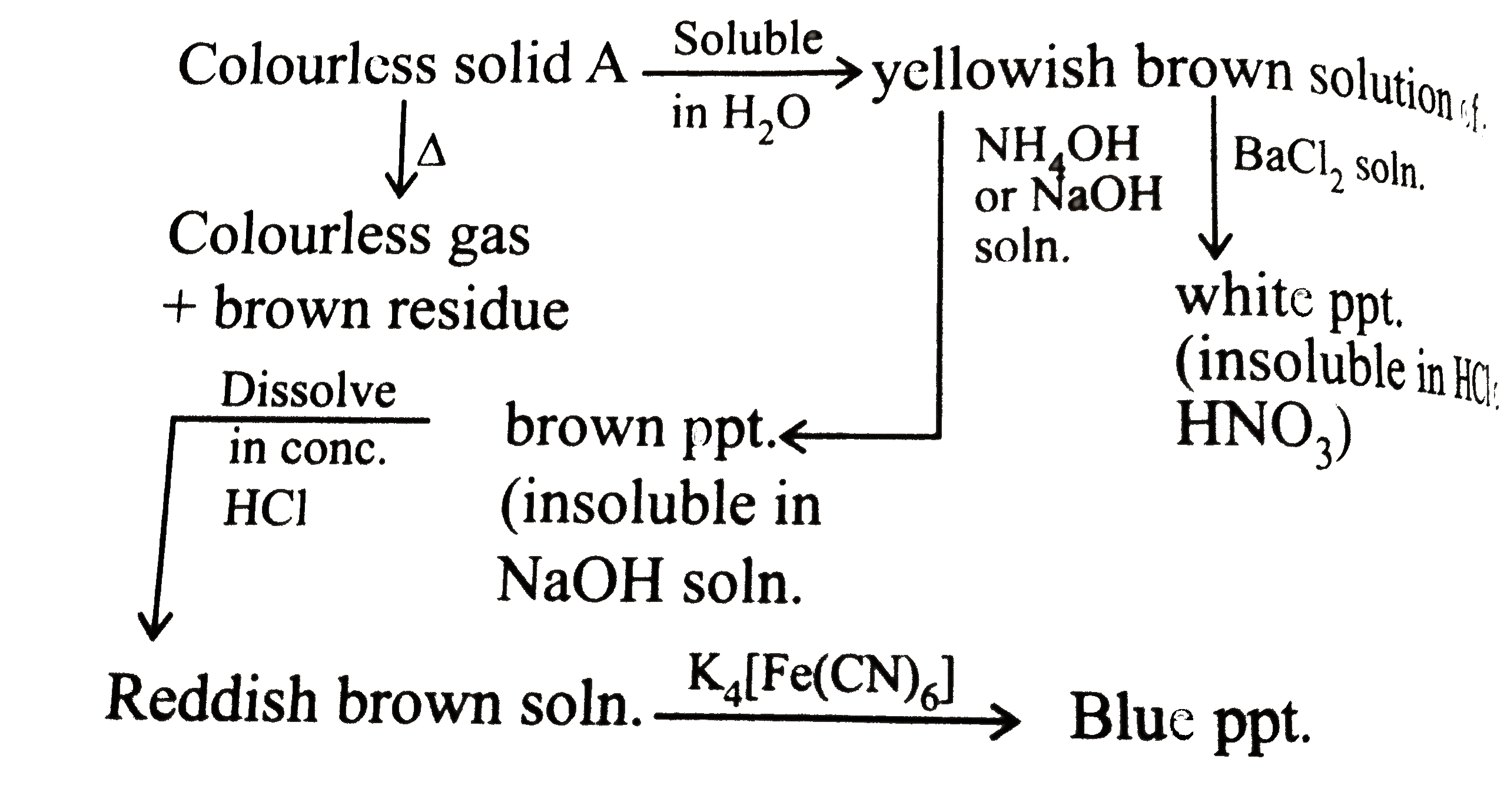K4[Fe(CN)6]+Mx+(aq.)→M4[Fe(CN)6]x⏐⏐↓Coloured precipitate
Which of the following cation does not respond to the above reaction?
Cu2+(aq.)
Fe3+(aq.)
Zn2+(aq.)
None of these
The correct Answer is:C
To solve the question, we need to analyze the reaction involving potassium ferricyanide, K4(Fe(CN)6), and various cations Mx+. The goal is to identify which cation does not produce a colored precipitate when reacting with potassium ferricyanide.
1. Identify the Reactants: The reactants in the reaction are K4(Fe(CN)6) (potassium ferricyanide) and a cation Mx+ in aqueous solution.
2. Understand the Reaction: The reaction can be represented as:
K4(Fe(CN)6)+Mx+→M4(Fe(CN)6)+X
This reaction is expected to form a colored precipitate of the complex M4(Fe(CN)6).
3. Analyze Different Cations:
- Cation 1: Cu2+: When K4(Fe(CN)6) reacts with Cu2+, it forms a red-brown colored precipitate Cu2(Fe(CN)6). This indicates that Cu2+ responds to the reaction.
- Cation 2: Fe3+: The reaction of K4(Fe(CN)6) with Fe3+ produces a dark blue precipitate known as Prussian blue, KFe(Fe(CN)6). This also indicates a response to the reaction.
- Cation 3: Zn2+: When K4(Fe(CN)6) reacts with Zn2+, it forms a white precipitate Zn2(Fe(CN)6). Since this precipitate is not colored, Zn2+ does not respond to the reaction in the context of producing a colored precipitate.
4. Conclusion: Based on the analysis, the cation that does not produce a colored precipitate when reacting with potassium ferricyanide is Zn2+.
Final Answer:
The cation that does not respond to the above reaction is Zn2+.
---
K4(Fe(CN)6)+Mx+→M4(Fe(CN)6)+X
This reaction is expected to form a colored precipitate of the complex M4(Fe(CN)6).
- Cation 1: Cu2+: When K4(Fe(CN)6) reacts with Cu2+, it forms a red-brown colored precipitate Cu2(Fe(CN)6). This indicates that Cu2+ responds to the reaction.
- Cation 2: Fe3+: The reaction of K4(Fe(CN)6) with Fe3+ produces a dark blue precipitate known as Prussian blue, KFe(Fe(CN)6). This also indicates a response to the reaction.
- Cation 3: Zn2+: When K4(Fe(CN)6) reacts with Zn2+, it forms a white precipitate Zn2(Fe(CN)6). Since this precipitate is not colored, Zn2+ does not respond to the reaction in the context of producing a colored precipitate.
The cation that does not respond to the above reaction is Zn2+.
Topper's Solved these Questions
- TYPES OF REACTIONSBOOK - VK JAISWAL ENGLISHCHAPTER - TYPES OF REACTIONSEXERCISE - LEVEL 3
44 Videos
- TYPES OF REACTIONSBOOK - VK JAISWAL ENGLISHCHAPTER - TYPES OF REACTIONSEXERCISE - ONE OR MORE ANSWERS IS/ARE CORRECT
40 Videos
- TYPES OF REACTIONSBOOK - VK JAISWAL ENGLISHCHAPTER - TYPES OF REACTIONSEXERCISE - SUBJECTIVE PROBLEMS
42 Videos
- s-BLOCK ELEMENTSBOOK - VK JAISWAL ENGLISHCHAPTER - s-BLOCK ELEMENTSEXERCISE - SUBJECTIVE PROBLEMS
2 Videos
Similar Questions
Knowledge Check
O.N. (Oxidation Number) of Fe in K4[Fe(CN)6] is
A+2B+3C+4D+6
In K4[Fe(CN)6],Fe is in the form of
View SolutionIn the complex K2Fe[Fe(CN)6]:
View SolutionIntense blue precipitate of Fe4[Fe(CN)6]3 and potassium hydroxide solution when mixed gives:
View SolutionK3[Fe(CN)6]+FeCl3→Fe[Fe(CN)6]⏐⏐↓
View SolutionK4[Fe(CN)6]+ZnSO4→Zn2[Fe(CN)6]⏐⏐↓
View Solution4KCN+Fe(CN)2⏐⏐↓→K4[Fe(CN)6]
View SolutionK3[Fe(CN)6]+FeCl2→Fe3[Fe(CN)6]2⏐⏐↓
View Solution

